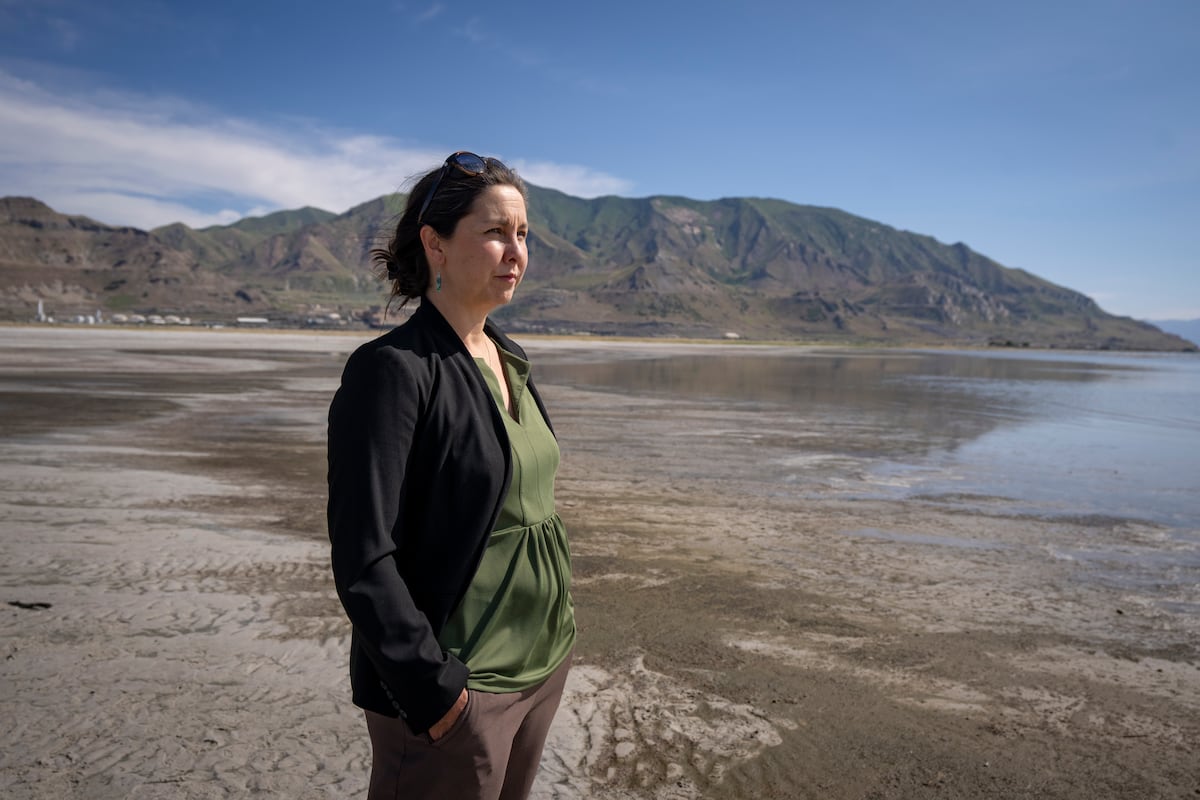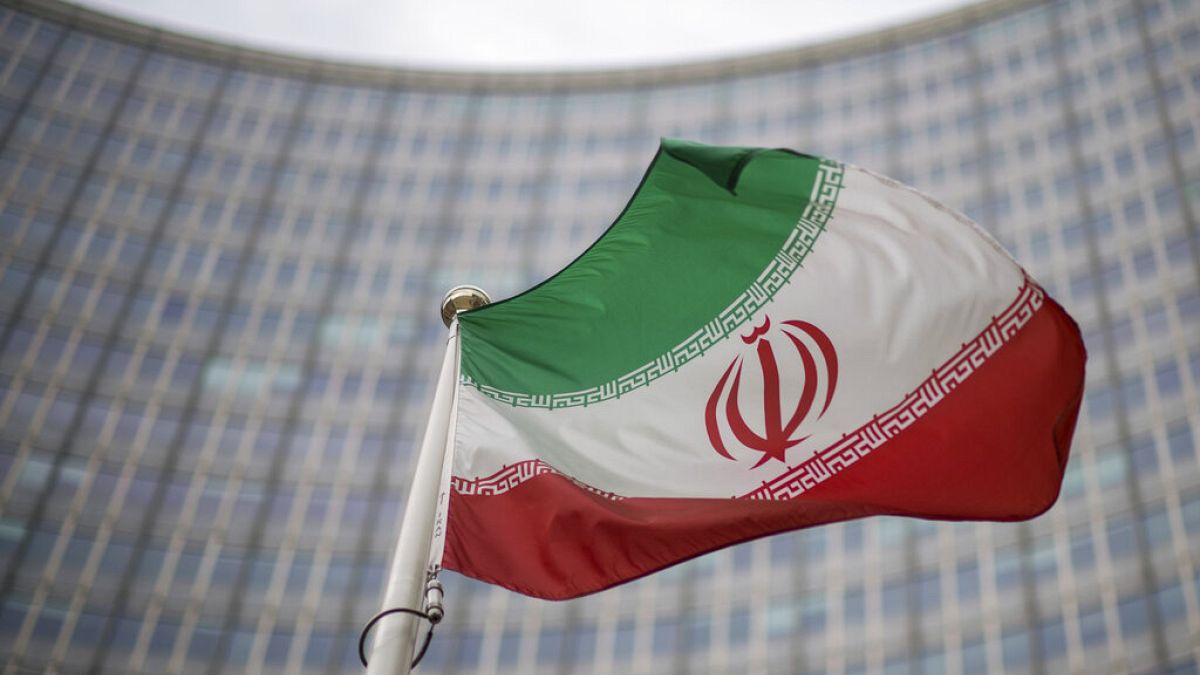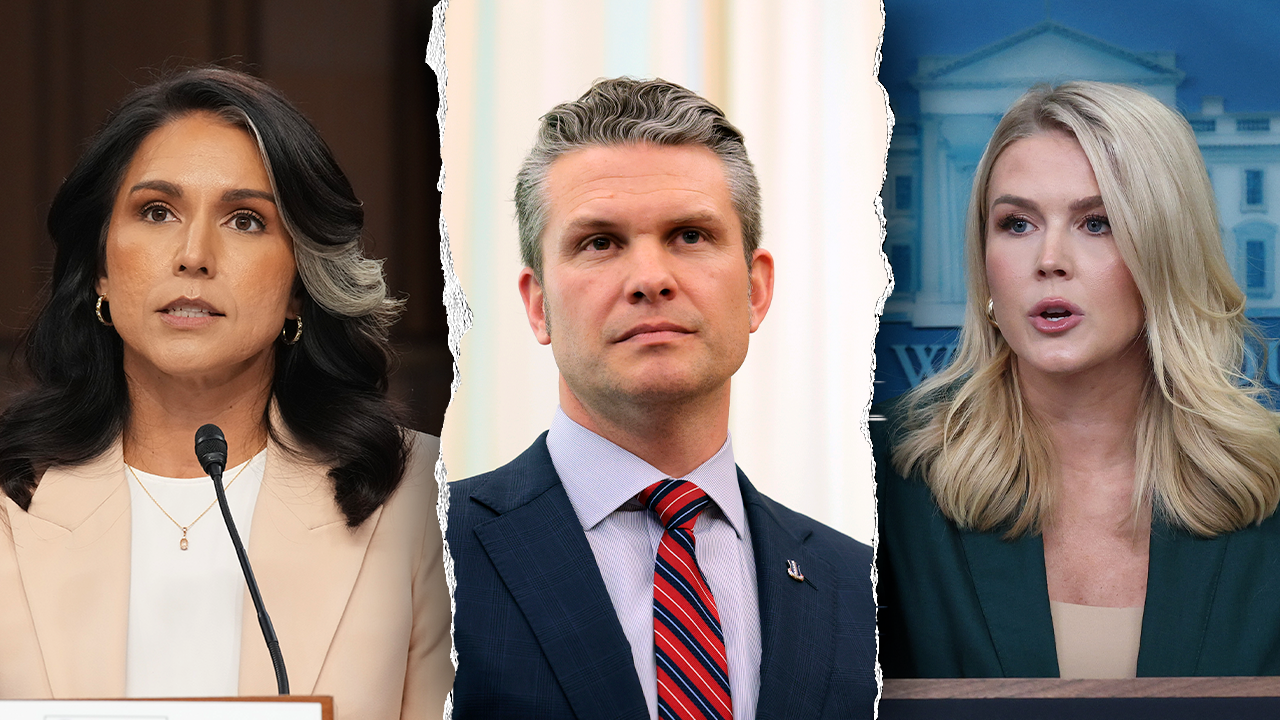Note to readers • The following story is Part 2 of two stories reported by The Utah Investigative Journalism Project in partnership with The Salt Lake Tribune and support from the McGraw Center for Business Journalism at CUNY’s Craig Newmark Graduate School of Journalism. Read Part 1 here.
As Utah continued its trend of violating federal air pollution limits, state air quality officials asked the National Oceanic and Atmospheric Administration for help in 2017.
On NOAA’s first day of data collection, aimed at better understanding the atmospheric chemistry above the state, an airplane flew over US Magnesium in Tooele County. It picked up some of the highest levels of halogens — a group of chemicals including chlorine — that the agency has ever measured.
That finding, revealed in a study published in 2023, has been debated ever since — from its accuracy to what it should mean for how the state governs Utah’s air quality.
This spring, Senate Majority Leader Kirk Cullimore claimed a victory when Gov. Spencer Cox signed HB420 into law, giving the Utah Division of Air Quality (DAQ) new authority to regulate the emission of halogens.
Halogens include chemicals whose interaction in the environment “worsens our winter inversions on the Wasatch Front by 10 to 25%,” said Cullimore, R-Cottonwood Heights, who sponsored the bill.
(Francisco Kjolseth | The Salt Lake Tribune) Sen. Kirk Cullimore, R-Salt Lake City, during the 2025 legislative session, Wednesday February. 26, 2025.
But it’s not yet clear whether HB420 will result in any additional, independent monitoring of air quality near the magnesium plant — the absence of which has already impacted research into Utah’s persistently poor air quality.
Federal and state regulation of US Magnesium relies significantly on self-reports from the company about its emissions. And even if the state installed air monitors near US Magnesium, it’s unlikely that they would pick up everything — because sensors capable of detecting all of its halogen emissions in real time were only recently invented, according to Jessica Haskins, an assistant professor of atmospheric chemistry at the University of Utah.
Scientists have brought these devices to the state for research purposes, but only temporarily, she said. Permanently installing a monitor capable of measuring all of the plant’s halogen emissions would cost the state about $1 million, Haskins estimated, which she suspects would be outside the state’s budget.
(Trent Nelson | The Salt Lake Tribune) Jessica Haskins, an assistant professor of atmospheric sciences at the University of Utah, in Salt Lake City on Thursday, June 5, 2025.
HB420 did not include specific directives about how monitoring related to the bill should be carried out, DAQ spokesperson Ashley Sumner said, adding that the division is still weighing its options.
The air quality monitors currently nearest to US Magnesium, Sumner said, are located in the town of Erda, on a site state regulators selected because they believed it to be representative of the average conditions experienced by the majority of Tooele Valley residents. Air monitoring is focused, per federal regulation, on the state’s most populous areas, she said.
For now, US Magnesium has idled the plant following equipment breakdowns and a drop in lithium prices.
The question of bromine
(Steve Brown | NOAA) Carrie Womack, at left, is seen in 2017 with other researchers in the plane used in the Utah Winter Fine Particulate Study in January and February. The study was an effort by the National Oceanic and Atmospheric Administration’s Chemical Sciences Division and the Cooperative Institute for Research In Environmental Sciences. Womack works in the Chemical Sciences Laboratory in Boulder, Colorado.
When NOAA began the study in 2017, it didn’t plan to look specifically at US Magnesium, according to Carrie Womack, a researcher in the NOAA Chemical Sciences Laboratory in Boulder, Colorado, and one of the lead authors on the 2023 report.
Instead, it was responding to Utah’s DAQ query about why years of attempts to improve the state’s air quality weren’t curbing the trend of federal air pollution violations.
The emissions that NOAA measured on that first day matched what US Magnesium had reported about its releases of chlorine, specifically, Womack said. But the mining company’s monitoring didn’t capture the release of another halogen, bromine, because air quality regulations at the time did not require tracking or reporting it.
And that chemical turned out to be responsible for a good deal of the chemical reaction causing the state’s poor winter air quality, according to NOAA’s research. It concluded that emissions from US Magnesium’s West Desert facility could account for as much as a quarter of the small particulate pollution that famously accumulates in Utah’s air most winters.
But US Magnesium believes the study’s conclusions are “non-factual and … based on a series of poorly executed measurements, estimates, and conclusions,” the company said in an April 1 statement signed by CEO Ron Thayer and Rob Hartman, its environmental manager.
The company said it has hired a third-party engineering firm to conduct its own study of the company’s emissions and their impact on local air quality.
While it is accurate that US Magnesium is the only significant source of halogens in the area, Thayer and Hartman said, data from the DAQ show no direct correlation between its emissions and the state’s overall air quality.
“As USM production has decreased over the last eight years,” Thayer and Hartman said, “the average Salt Lake Valley smog related particulates have remained consistent.”
Indeed, the plant’s shutdown of magnesium mining in 2022 and of lithium mining last year have had no apparent impact on air quality trends in northern Utah, according to the state DAQ. State monitors have never observed a correlation between overall air quality in the state and daily operations at US Magnesium, Sumner said.
A complex equation
Womack said this is to be expected. The relationship between US Magnesium’s halogen emissions and wintertime particulate pollution is complex, and dependent on other factors such as temperature and snowfall, she said.
The presence of pollutants from other sources, such as cars and wildfires, also changes the equation. Barring an unlikely, exact repeat of the conditions seen in the winter of 2017, it’s improbable that a correlation with US Magnesium’s operations would show up in day-to-day air quality trends, Womack said.
She also noted that the study only considered data from 2017, a year when US Magnesium reported higher-than-usual chlorine emissions. Because the company did not report bromine emissions at the time, it’s difficult to say whether bromine emissions were also elevated in 2017, Womack said.
But if they were, it is possible that the resulting calculations by NOAA represent uncharacteristically high emissions by US Magnesium — and an inaccurate snapshot of its contributions to air quality in normal years.
These facts point to a need for greater, long-term study of emissions and air chemistry in Utah, Womack said, though she says the agency stands by its conclusions about the company’s contributions to air pollution in Utah.
“That was interesting to us because it’s not that often that you come across a source you didn’t know was there emitting a huge amount of something that has a negative impact on air quality,” Womack said, adding that NOAA took its time with analyzing the data after its collection to ensure its figures were accurate.
How Utah has and hasn’t taken action
The NOAA study triggered a push in 2023 by regulators and state lawmakers to pass a law that would impose limits on emissions of bromine from US Magnesium, but HB220 was ultimately rewritten to require a broader study of halogen emissions in northern Utah.
The Renco Group, US Magnesium’s parent company, gave $50,000 to Cox’s reelection campaign after the bill was rewritten, although US Magnesium said the donation was probably a routine expression of support for Cox’s larger policies by its parent company.
“USM has NEVER solicited assistance from Governor Cox regarding air quality regulations or proposed State emissions legislation,” Hartman and Thayer said. In a previous statement about the donation, a spokesperson for Cox noted: “The governor has no control over who chooses to contribute to his campaign.”
State lawmakers returned to the issue this year with the passage of HB420.
In a separate email to the Utah Investigative Journalism Project, Thayer said that unlike the first proposed law, this new law took a recommendation “periodically promoted by [US Magnesium] in the past” into account, by requiring the company to install “additional ducting to collect and treat one chlorine containing vapor stream in the magnesium plant.”
Thayer later clarified that the additional ducting in question would “process chlorine during downtime hours on the chlorine reduction burner,” which is a critical control device responsible for limiting chlorine emissions.
A sweeping notice of violation issued by the Environmental Protection Agency against US Magnesium in March 2023 focused on the chlorine reduction burner. It alleged the plant operated between January 2016 and July 2022 with the burner offline some 1,100 times — resulting in chlorine emissions in excess of the company’s permit during those years.
No further action has occurred, an EPA spokesperson said, because US Magnesium’s plant had been closed for months when the notice was issued.
HB420 does not specify what, exactly, US Magnesium must install to control emissions. The bill refers to “halogens” broadly and not to bromine specifically, and calls for the Utah DAQ to analyze which technologies or pollution control systems might best address halogen emissions — likely opening the door to the exact solution described by Thayer.
However, Thayer also said that “none of this is relevant at this time” because the plant is no longer operating, and the ducting in question would only be installed “should” the company decide to restart the plant.
The continuing challenge
(Rick Egan | The Salt Lake Tribune) Lexi Tuddenham at the Great Salt Lake, on Monday, June 2, 2025.
Lexi Tuddenham, executive director of HEAL Utah, said she hopes that funding associated with HB420 will prove large enough to install regulatory-grade monitors closer to US Magnesium.
The longstanding lack of independent, granular data on the company’s emissions presents a huge barrier to identifying regulatory actions that could help improve Utah’s air quality, she said.
The magnesium plant has been essentially protected by the region’s remoteness, low population and its longstanding use as an environmental “sacrifice zone” by the U.S. military, she said, which historically worked to discredit the concerns of Tooele residents in order to avoid criticism of its own operations there.
Tooele County was previously identified as a “Justice40” community, a designation for census tracts with significant historical environmental harms due to the presence of things like abandoned mine or military sites.
The initiative ensured that at least 40% of certain federal incentives — such as investments in affordable housing or electric school buses — went to such areas. An executive order signed by President Donald Trump ended the Justice40 program in January.
And since then, the Environmental Protection Agency under the Trump administration has said it is reconsidering whether the northern Wasatch Front should have to adhere to strict federal air quality standards for ozone.
“That area in Tooele and Grantsville, where HEAL was founded, has been particularly hard hit over the decades, between the Dugway Proving Ground, the biological agents that were tested in the area, the incineration of chemical weapons including things like nerve gas, and the [nuclear waste] storage facilities out at Energy Solutions,” Tuddenham said.
The lack of a large public outcry about emissions from US Magnesium “represents what always happens — people with less political power and less money get less voice,” she said. “ … And it’s just devastating, but unsurprising, that these things are still happening.”






























